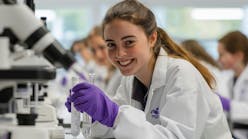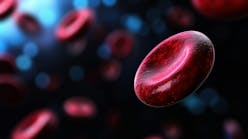In this month’s installment of The Primer, we’re going to take a brief detour into the sample extraction methods that are behind the scenes of many molecular diagnostics applications. The familiar adage from information technology “garbage in, garbage out” applies equally well to molecular diagnostics, and pairing the appropriate sample preparation method with an assay is an important part of ensuring its consistent and sensitive operation. This overview will aim to leave the reader with an appreciation for the functions and capabilities of different extraction methods and their relative applicability to different situations.
The obvious initial question is, “Why do sample extraction at all”? In general, the effects of sample extraction upstream of an MDx assay fall into three categories, with specific methods performing functions in these categories to a greater or lesser extent. They are: 1) purification of target nucleic acids away from substances which may have an inhibitory effect on enzymes or processes in an assay; 2) concentration of target nucleic acids from a dilute sample into a small enough volume for inclusion in an assay; and 3) physical and chemical stabilization of the nucleic acids. Sample extraction is needed when one or more of these is required for an assay to reach desired sensitivity levels. Let’s consider each in turn.
What comprises “inhibitory substances” depends on the assay itself. Assays which avoid much enzymatic manipulation of nucleic acids, such as direct hybridization capture techniques, tend to be relatively insensitive to the presence of a large range of chemicals, media, or cellular components which might be mixed with an unpurified specimen. Many MDx applications do, however, require activity of exogenous enzymes (most frequently, DNA polymerases) on the sample as part of their process. For these, carryover of any substances which directly or indirectly reduce the activity of the enzymes results in reduced assay sensitivity and potential false negative results.
The list of substances which have been shown to inhibit DNA polymerases is long, but some of the most commonly encountered problem substances in clinical specimens include heme (and thus whole blood); chelating agents (including many anticoagulants, whose mode of action is by Ca++ / Mg++ chelation; removal of these from the polymerase buffer makes the dNTPs less reactive); ethanol or isopropanol; and protein denaturing or chaotropic agents such as guanidine or urea. Prior exposure of the specimen to other substances such as formalin can also greatly reduce polymerase activity on the sample nucleic acids, although in this case it’s via an indirect mechanism (covalent cross-links on the nucleic acid molecules) and not something which can be overcome by simple purification of the nucleic acids. In general, the more nucleic acids can be purified away from all other cellular and media components, the wider the range of downstream MDx processes the sample will be suitable for. Generic extraction methods thus generally strive to achieve high purities. For very specific single applications, this is not always necessary; for instance several suppliers sell DNA polymerases capable of effective function in as much as 40% whole blood, potentially allowing a specific assay to function well on even unpurified whole blood samples.
Concentration of target nucleic acids is a second goal of many sample extraction approaches. Molecular approaches such as PCR to be covered in the next several columns are exquisitely sensitive, with the theoretical capacity to detect as little as one assay target molecule in a reaction. In applications such as simple genotyping, this can mean that sample concentration is not required; a simple buccal swab, for instance, has much more target nucleic acid than is needed. Other applications, however, such as detection of a very small fraction of circulating tumor cells in patient bloodstream, fetal cells in maternal blood, or some infectious disease applications where clinically significant pathogen load can be very low, require larger sampling and/or concentration of clinical specimens to have a statistically relevant chance of an MDx reaction sample input volume (perhaps 5 to 20 µl) containing even the small number of target molecules needed for detection. Thus, extraction methods which can take large volumes (up to mililitres), sample input volumes, and concentrate the contained nucleic acids into tens of microlitres are needed in such applications.
The third function of sample extraction, nucleic acid stabilization, applies primarily to assays which target RNA molecules. DNA is inherently a highly stable molecule. Protected from light and oxidation, such as embedded in amber, detectable DNA molecules with ages in the millions of years have been isolated. In more mundane environments, DNA is still stable for days to weeks, well outside the timeframes in which speed of transport issues can arise. (Note, however, that even DNA can be degraded rapidly by some conditions, such as low pH, and thus stabilization is desirable).
RNA, however, is very different from DNA in terms of chemical stability. The single –OH group difference makes the ribose sugar much more chemically reactive than its deoxyribose cousin. Additionally, a class of RNA degrading enzymes (RNases) are both ubiquitous and robust. These are present in essentially all biological samples and can rapidly, and often non-specifically, destroy RNA molecules within minutes of contact. MDx applications which require an RNA target thus generally require aggressive chemical sample extraction components which work to inactivate RNases, and additional care is needed in assuring all associated reagents and consumables are “RNase free.” (The reader may appreciate from the above why life has chosen DNA as the standard genetic repository material; discussion of that, as well as of the biological reasons and even great utility for RNase ubiquity, are both fascinating but beyond the scope of this series).
Having dealt with the “why” and “what” of sample extraction, let’s now consider the “how.” Space constrains us to consider only some of the more common methods in the following, in order of increasing complexity.
Boiling or detergent lysis. Boiling of a suspension of cells—bacterial or eukaryotic—tends to lead to random lysis, leakage of cellular content (including nucleic acids) into the bulk solution, and precipitation of many proteins and some macromolecular inhibitors. Many viruses are also effectively lysed by this approach. (Detergent lysis may also be performed, but such detergents are often directly inhibitory to downstream processes.) When followed by a quick centrifugation to pellet debris, the supernatant can be a good MDx input material for DNA-based assays starting from relatively clean, concentrated material (such as single bacterial colonies). Lack of removal of many chemical inhibitors, dilution rather than concentration, and lack of removal or inactivation of RNases limit this approach from more general use, but where applicable in a specific context it’s simple, cheap, fast, and effective.
Ethanol precipitation. DNA and RNA are readily soluble in aqueous environments, as the water interacts (solvates) the nucleic acid through its H-bonding capacity. Addition of moderate concentrations of ethanol or isopropanol interferes with this, causing nucleic acid precipitation while many chemical inhibitory substances remain soluble. Numerous methods take advantage of this; for example one could perform a boil and spun preparation as described above, or an equivalent detergent lysis and centrifugation, and then mix the resulting supernatant with EtOH or iPrOH. Centrifugation again leads to precipitation of the nucleic acids, with the supernatant carrying away many possible inhibitors. Additionally, as the recovered nucleic acids may be resuspended in a small volume, approaches of this nature can concentrate the sample.
Silica affinity. If an aqueous sample containing nucleic acids is mixed with suspended silica surfaces, and the solvation properties of the aqueous environment are disrupted (either by addition of alcohols, such as above, or by addition of chaotropic agents such as guanidine, rubidium salts, or caesium salts), the nucleic acids will reversibly bind to silica surfaces as the best available H-bond interactor. If a liquid specimen is mixed with detergent and chaotropic agents, this causes cellular (or viral) lysis, and the chaoptropic agents additionally have the capacity to inactivate RNases. Nucleic acids in the sample bind to available silica surfaces, and if this silica can be held back while the supernatant is removed, partially purified and concentrated nucleic acids are left behind. Additional purification of cellular debris (as well as removal of the chaotropic agents) can then be effected by washing of the silica surface with bound nucleic acid in alcohol containing aqueous buffers; the alcohol component keeps the nucleic acids silica bound, while other materials wash off. Frequently more than one wash composition is used in series, with decreasing salt or alcohol concentrations in later washes, to further clean the material bound to the silica. Finally, replacement of the aqueous environment with a good nucleic acid solvent such as low salt, buffered substance (such as Tris-EDTA, pH 8 “TE8”) allows the now purified nucleic acids to release from the silica and come back into solution for recovery.
Known in general as the Boom method, the technical challenge here is to find ways to retain the silica while passing lysate and wash buffers over it. One common approach is by trapping the silica particles in a small column, which in turn may be centrifuged to pass lysate or wash buffer from an upper reservoir over the silica matrix by centrifugal force. Many readers are no doubt familiar with any of a number of commercial products which perform exactly this process (and the functions of lysis and wash buffers, column matrix, and elution buffers are now made clear). A related but more readily automated approach places the silica surface around tiny paramagnetic particles; addition of these silica coated “magnetic beads” to lysis solution and subsequent trapping of the beads, with surface bound nucleic acids, in strong magnetic fields, allows for the passage of wash and elution buffers over the bead surfaces. Again, many readers are likely familiar with some variety of commercial instruments using this process, and the chemistry behind the various steps can be followed. By far the most common nucleic acid extraction methods in use today are based on variations of this approach, as it performs all three functions of sample extraction.
Considering our specified three functions of sample extraction, it follows that for a particular application and specimen type, one or more of the functions may be dispensed with. In fact, in some cases with “clean,” high quantity target input, effective assays may be able to dispense with extraction processes altogether. While this is desirable in terms of speed, simplicity, and cost, most MDx applications require one or more of the three sample processing aspects discussed. Matching of the “best suited” extraction method to a specific MDx application allows optimization of assay efficiency; however, in cases where a single sample will be used for a range of different possible downstream assays, a generic approach which achieves all three functions is often best for a process workflow.





